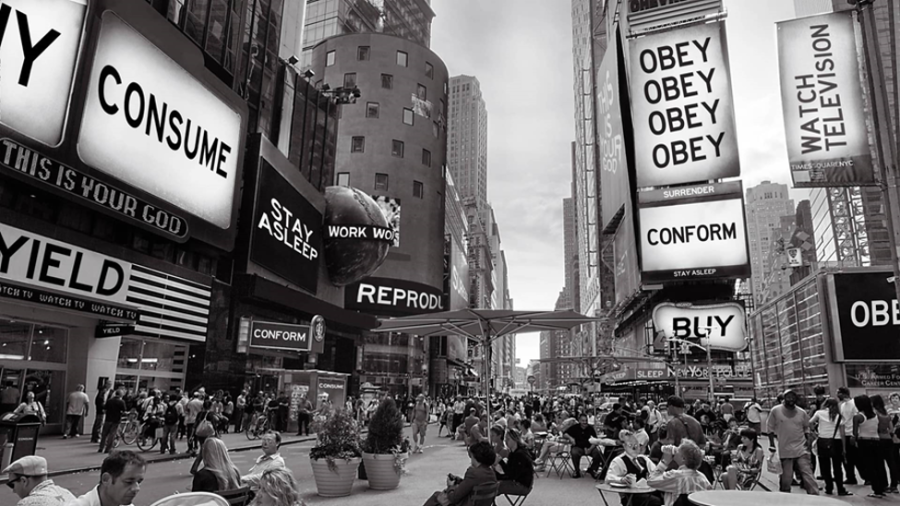
Analyzing the Cultural Sector through the Lens of Media and Communication The concept of the culture industry, formulated by philosophers Theodor Adorno and Max Horkheimer, has become a fundamental topic. Their analysis reveals that cultural products extend beyond mere entertainment; they are deeply embedded in societal structures, shaping our perceptions and interactions. This blog will explore the essential elements of the cultural sector and its impact on communication and media, as well as the role of media within society.
Defining the culture industry:
The culture industry refers to the large-scale production and consumption of cultural products, including films, music, literature, and television. In contrast to organic cultural expressions that emerge from community and individual creativity, the outputs of the culture industry are created primarily for profit. This transformation prompts significant inquiries regarding authenticity, representation, and the influence of media within society.
Core Characteristics of the Culture Industry:
Standardization and Formulaic Production:
Cultural products often follow established formulas to ensure commercial viability. For example, the success of specific genres in film and television leads to predictable narratives, which can limit creativity and diversity in storytelling.
Mass Consumption Dynamics:
The culture industry is propelled by mass consumption, with products designed for broad accessibility and appeal. This strategy frequently sacrifices the depth of cultural content in favour of widespread marketability.
Monopolisation and Control:
A small number of large corporations dominate the cultural landscape, which may impede diversity. This concentration of influence can lead to insufficient representation of marginalised communities, perpetuating stereotypes and narrowing the scope of cultural dialogue.
Illusion of Choice:
While consumers may believe they have numerous options, many cultural products stem from the same corporate sources. This reality can create a deceptive sense of variety, overshadowing truly innovative or independent works.
Societal Implications:
The culture industry exerts significant influence on society. While it has the potential to democratise cultural access, enabling a broader audience to engage with various forms of media, it also poses the risk of oversimplifying intricate social issues, transforming them into mere entertainment. Furthermore, the representation of diverse groups within media can perpetuate detrimental stereotypes, thereby shaping societal perceptions and interactions.
Examples of the Cultural Industry are Film and Television: Hollywood productions and widely viewed television programs frequently mold societal standards, sway political opinions, and mirror cultural principles. The popularity of superhero films, for instance, has brought themes of heroism and ethics to the forefront of public consciousness. Music: Various music genres, including hip-hop, pop, and country, serve to both reflect and shape social issues such as racial dynamics, gender expectations, and economic disparities. Prominent artists like Beyonc├ę and Kendrick Lamar leverage their influence to advocate for social justice. Literature: Popular novels often encapsulate societal issues and can galvanize movements. For example, “The Handmaid’s Tale” has ignited conversations surrounding gender and power relations. Video Games: The expansion of the gaming sector has significantly influenced cultural narratives and introduced novel forms of social interaction. Titles such as “Fortnite” and “The Last of Us” affect how players connect with narratives and one another. Social Media: Platforms such as Instagram, TikTok, and YouTube foster new cultural trends, empowering individuals to become content creators and influencers, thereby shaping public trends and discussions.
Critical Engagement with the Culture Industry:
Promote Independent and Diverse Voices: Actively seek and elevate the works of independent creators who challenge dominant narratives, thereby enriching cultural discourse.
Critically Analyze Media Messages: Engage thoughtfully with the content consumed. Reflect on how it aligns with or contests societal norms and values, considering its potential implications.
Champion Ethical Practices: Support media organisations and artists that emphasise fair compensation, representation, and sustainable practices in their endeavours.
Conclusion:
Grasping the nuances of the culture industry is essential for understanding the wider implications of media in our lives. By examining its structures and effects, we can become more discerning consumers and advocates for a diverse and inclusive cultural environment.

